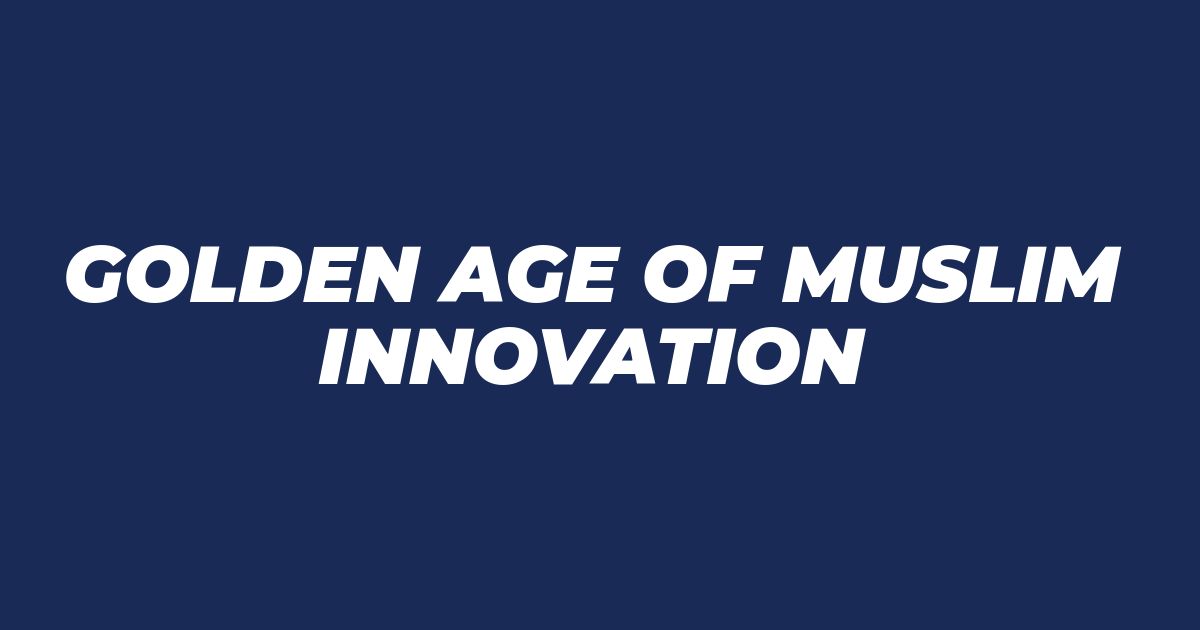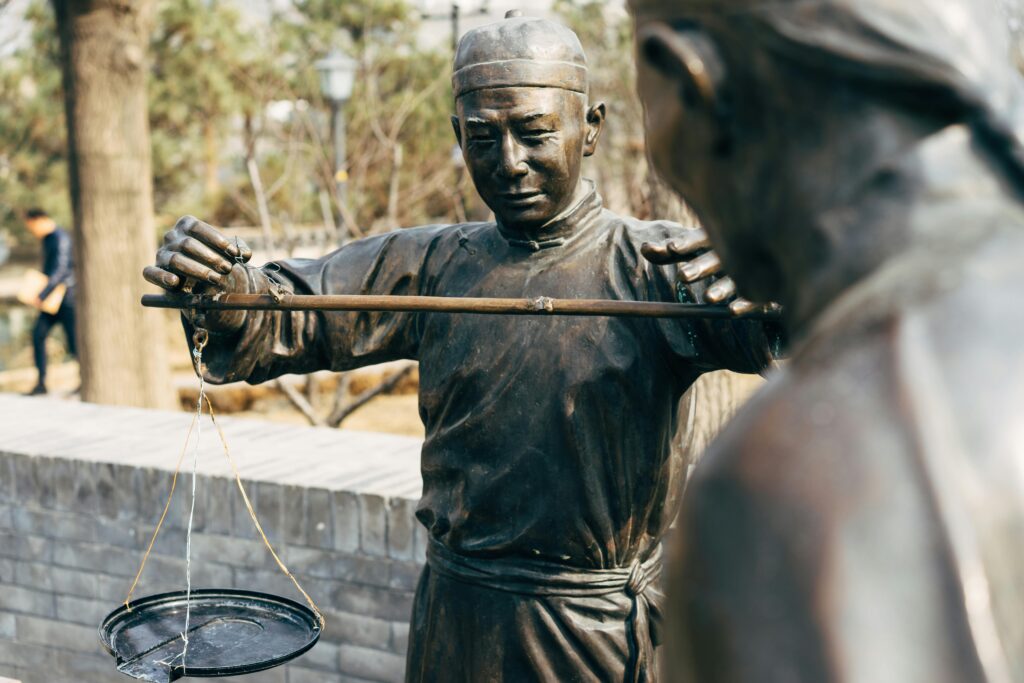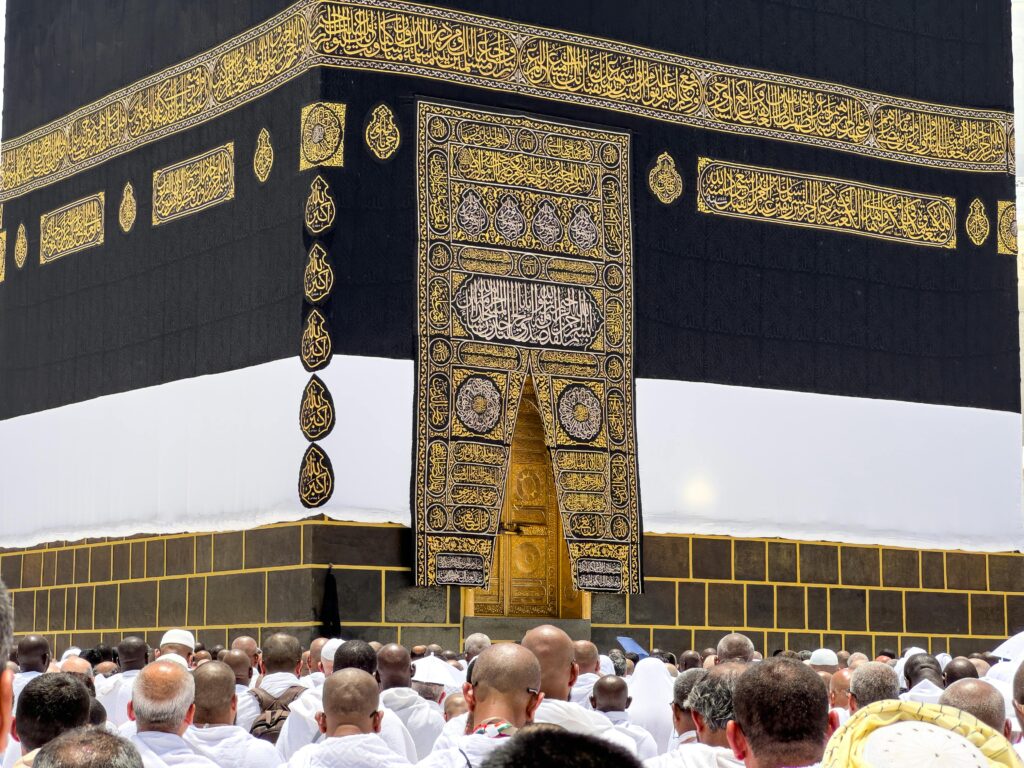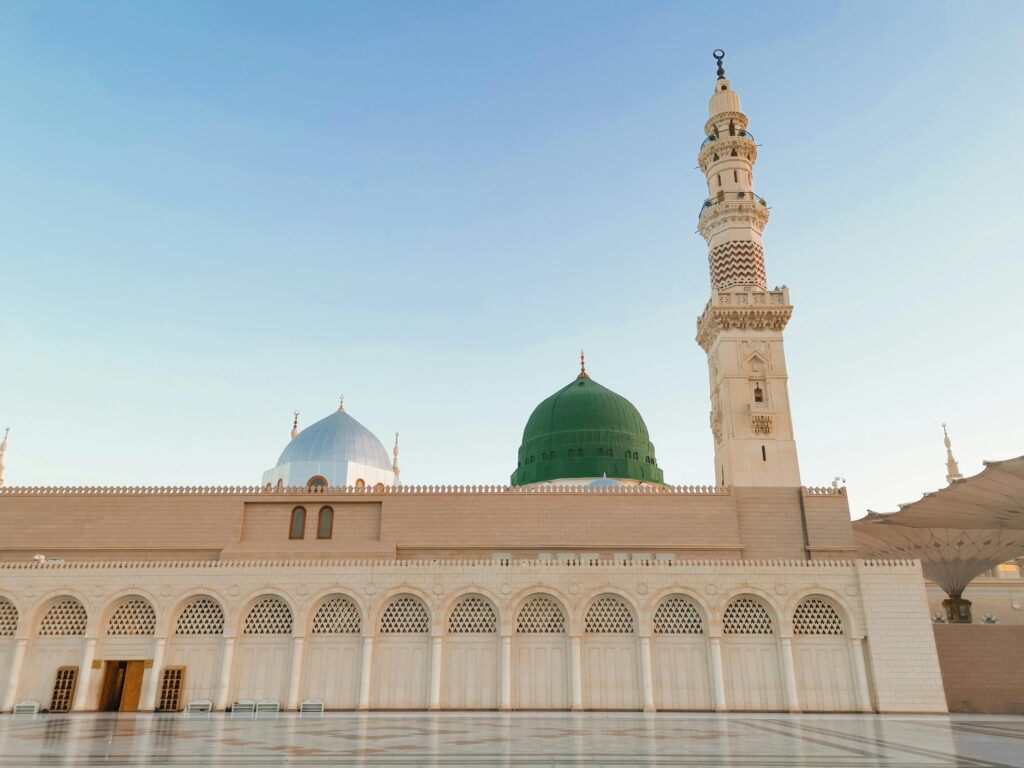Groundbreaking Inventions and Scientific Advances
Muslim scholars during the Middle Ages did not just keep knowledge alive—they created it. Their curiosity and creativity sparked inventions and discoveries that the world still depends on every day. Hospitals, complex math, navigation tools, and even the numbers on your keyboard trace their roots to Muslim thinkers, engineers, and scientists. Below are some of the most exciting stories and real-world impacts from this golden era of invention.
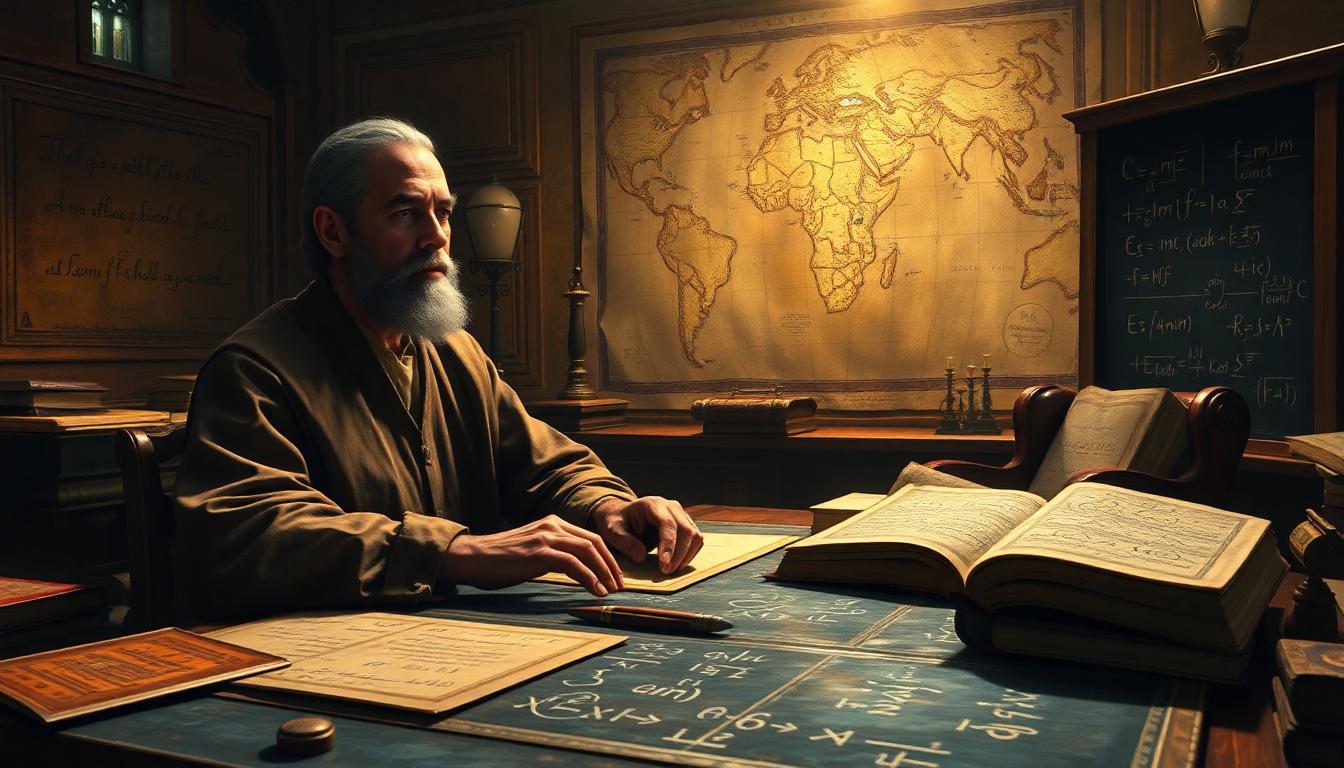
The discovery of algebra and mathematical ideas by Muslim scholars. Image generated by AI.
The Birth of Algebra and Algorithms
Math without algebra would be like music without notes. The Persian mathematician Al-Khwarizmi, working in Baghdad’s House of Wisdom, wrote books that gave us the words algebra and algorithm. His step-by-step problem-solving approach, found in his famous text, made math easy to share and teach.
Thanks to Al-Khwarizmi:
- We use “algebra” (from his book al-jabr) for solving equations.
- His name inspired the word “algorithm” (a set of steps to solve problems).
- The decimal number system (what we now call Arabic numerals) replaced cumbersome Roman numerals and helped everyone from merchants to scientists.
His work influenced Europe for centuries. For more on his legacy and how numbers travel the world, visit this summary on Al-Khwarizmi.
Optics, Light, and the Scientific Method
If you’ve ever taken a photo, thank Ibn al-Haytham—his work sparked the science behind cameras. Living in Cairo around 1000 CE, he wrote the Book of Optics. He didn’t just guess how light worked; he tested ideas, measured results, and used experiments.
Key advances from Ibn al-Haytham:
- Explained vision and light reflection using experiments, not just theory.
- Described the camera obscura, which led to the invention of cameras.
- Used what we now call the scientific method—observation, hypothesis, experiment, and proof.
His habit of questioning and testing changed science forever. Dive into how he shaped both optics and research in the Book of Optics.
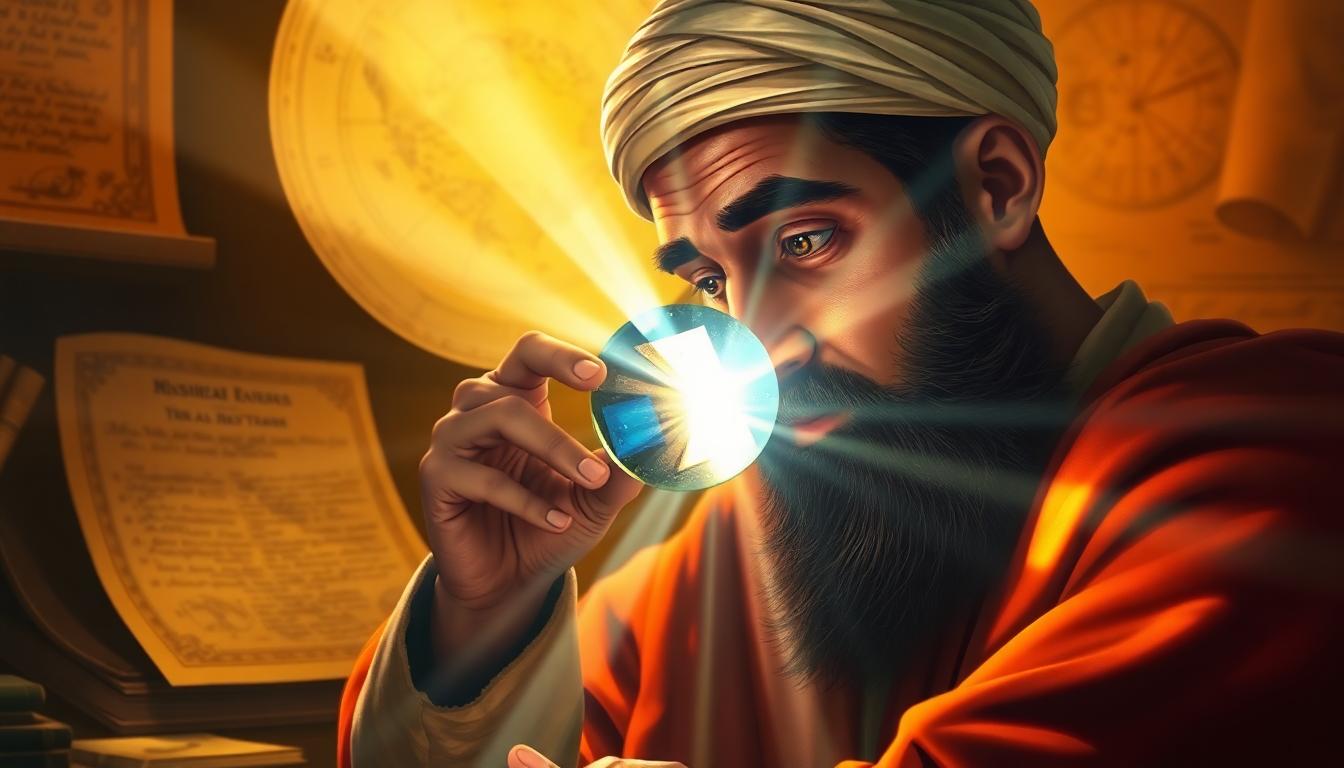
Ibn al-Haytham examines the behavior of light and sparks the science of optics. Image generated by AI.
Early Hospitals and Surgical Tools
Modern healthcare owes a huge debt to Muslim innovators. The world’s first true hospitals appeared in places like Baghdad and Cairo, open to everyone regardless of wealth or background. Doctors recorded patient cases carefully and separated wards by illness.
Pioneers like Abu al-Qasim al-Zahrawi (known as Abulcasis in Europe) designed more than 200 unique surgical tools—some still in use today. His Book of Surgery was a hit across medieval Europe, sharing ideas on everything from stitching wounds to removing tonsils.
Hospitals from this era featured:
- Training centers for doctors and pharmacists
- Recovery wards designed for comfort and privacy
- Special instruments for delicate procedures
Explore more about these contributions to surgical sciences in this article about Abu Al Qasim Al Zahrawi: Pioneer of Modern Surgery.
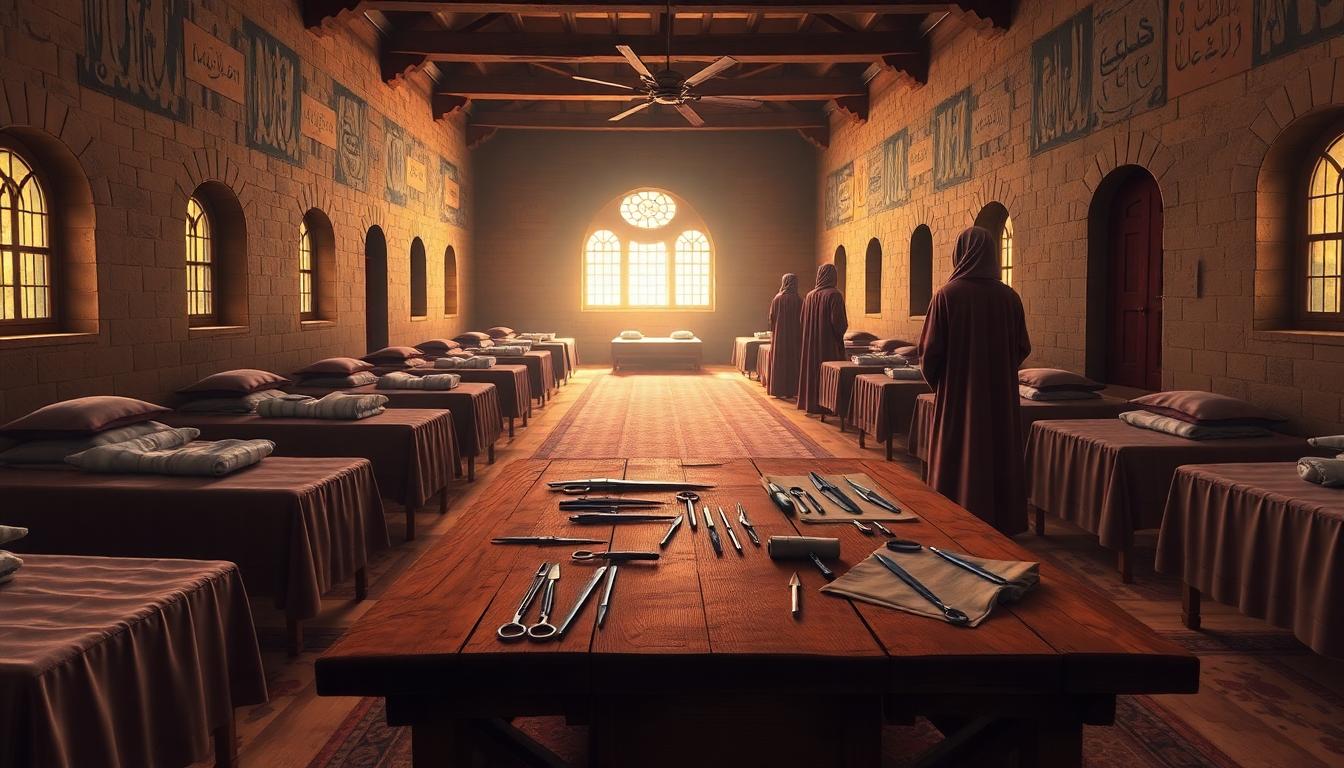
Abbasid Baghdad’s hospitals set a new standard for care and innovation. Image generated by AI.
Chemistry, Engineering, and Ingenious Machines
Muslim engineers were the go-to people for clever inventing. Alchemists like Jabir ibn Hayyan (Geber) improved chemistry with new lab tools and formulas. Meanwhile, teams of inventors, often brothers or friends, built extraordinary machines.
The Banū Mūsā brothers wrote the Book of Ingenious Devices, packed with 100 mechanical inventions from trick fountains to automatic water dispensers. Their work inspired centuries of engineers.
Then came al-Jazari, who wrote The Book of Knowledge of Ingenious Mechanical Devices in 1206. His gears, pumps, automata, and clocks amazed rulers and visitors alike. He built everything from programmable musical bands to the earliest crank-driven pumps.
Find more on these wild inventions in an overview of The Book of Engineering Marvels.
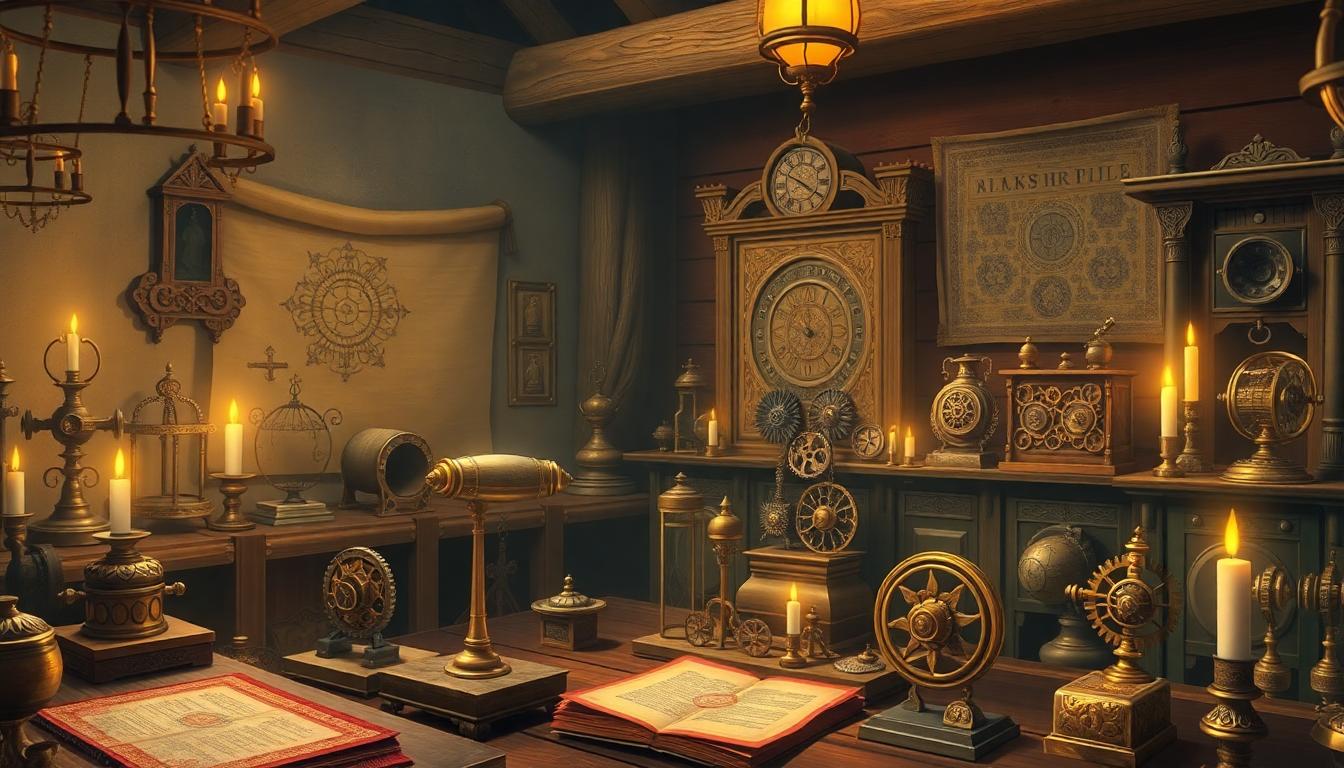
Inventors like Banū Mūsā and al-Jazari built machines and automata far ahead of their time. Image generated by AI.
Real-World Impact: Numbers, Navigation, and Daily Life
Muslim inventions made daily life smoother for the world. Here’s how:
- Hospitals cared for all and trained new doctors.
- Algebra and “Arabic” numerals unlocked business, science, and art.
- Astrolabes and improved maps let sailors explore safely, guiding trade and discovery.
- Water-raising devices and windmills powered cities and farms, fighting drought and improving food supplies.
- Chemical distillation gave us perfumes, medicines, and longer-lasting food.
Below is a quick table highlighting some of these lasting contributions:
| Field | Scholar/Inventor | Key Advance | Modern Impact |
|---|---|---|---|
| Algebra | Al-Khwarizmi | Systematic methods for equations | Critical for all math and computing |
| Optics | Ibn al-Haytham | Scientific method, camera basics | Lenses, cameras, research methods |
| Surgery | Abulcasis (al-Zahrawi) | 200+ surgical tools, operations | Surgery, hospitals, med schools |
| Engineering | Banū Mūsā, al-Jazari | Automata, water devices, clocks | Robotics, automation, timekeeping |
| Navigation | Many, including Al-Battani | Improved astrolabes, maps, calendars | GPS, navigation, global trade |
The breakthroughs from Muslim inventors were never just for show. They shaped the way people lived, did business, and explored the world. To dig deeper into the translation movement and global sharing of ideas, explore the work of Baghdad’s House of Wisdom.
These advances connect neatly to the centers of learning and culture in the Muslim world, as seen in the libraries of Cordoba and the bustling halls of Baghdad. Their inventions continue to touch our lives at every turn.
The Ottoman Empire and the Lasting Global Legacy
After the fall of Baghdad in 1258, a new power soon took the stage: the Ottoman Empire. This dynasty rose from humble beginnings in Anatolia and grew into a powerhouse that carried forward the ideas, learning, and traditions from earlier Muslim empires. The Ottomans didn’t just conquer new lands; they became expert governors, skilled traders, and lasting builders, bridging East and West and leaving marks still visible around the world.

Ottoman Istanbul links Europe and Asia as a center of trade, culture, and power. Image generated by AI.
How the Ottomans Rose and Spread Their Power
In the late 1200s, Turkic warriors built a small state on the edge of the crumbling Byzantine Empire. Their leader, Osman, gave his name to the new Ottoman dynasty. Over the next few centuries, the Ottomans expanded thanks to strong sultans, advanced armies, and clever alliances. When they conquered Constantinople (now Istanbul) in 1453, they not only ended the Byzantine Empire, they sparked a new era.
The empire’s reach soon spread across:
- Southeast Europe (including the Balkans, Greece, and Hungary)
- North Africa (from Algeria to Egypt)
- The Middle East (all the way to the Persian Gulf and Red Sea)
At its height, the Ottoman Empire controlled lands on three continents. These regions became linked by trade routes, roads, and strong rule that united cities and markets from Cairo to Budapest.
Carrying Forward a Proud Heritage
The Ottomans saw themselves as inheritors of the Umayyad, Abbasid, and other earlier Muslim civilizations. They protected major holy sites and welcomed doctors, poets, and builders from across the Muslim world. They built schools and supported scholars in fields like astronomy and medicine.
This legacy was more than words. Ottoman Istanbul, with its grand mosques, became a symbol of cultural blending. The famous architect Mimar Sinan designed hundreds of buildings with beautiful domes and sweeping arches, carrying forward ideas from Damascus and Cairo but making them Ottoman.
Governing a Diverse Empire
One of the Ottomans’ greatest strengths was their ability to rule many different peoples. Christians, Jews, and Muslims all lived within the empire, each following their own laws and traditions. The Ottomans used the “millet” system to organize communities by faith, giving each group a measure of autonomy.
This approach allowed:
- Freedom of worship across many cities and villages
- Religious courts to settle community disputes
- Teachers and scholars to share knowledge across languages and faiths
This mix created a mosaic of cultures—bazaars bustled with goods from Asia and Europe, while poets and mathematicians exchanged ideas in busy coffeehouses.
Ottoman Administration, Law, and Trade
Ottoman rulers understood the power of clear rules and good administration. They split the empire into provinces, each led by a governor (called a “pasha”) who answered to the sultan. Civil servants and scribes, trained from a young age, made sure that taxes were fair and justice was served.
The Ottomans gave the world a legal code called the “Kanun,” which complemented Islamic law (sharia). This allowed courts to solve everyday disagreements about business, land, and families. Their postal networks, roads, and ports kept goods and ideas flowing smoothly.
Ottoman traders moved silk, coffee, and spices along ancient routes. Istanbul became a crossroads where European merchants and Asian traders met—sometimes competing, sometimes cooperating, but always exchanging new products and inventions.
For a closer look at how Ottoman law balanced tradition and change, check out the overview of Ottoman legal codes and governance.
Lasting Achievements in Architecture, Learning, and Daily Life
Even today, the Ottomans’ creative touch appears across cities they ruled.
A few achievements stand out:
- Grand mosques like the Suleymaniye and Blue Mosque highlight Ottoman skill in blending light, space, and tilework.
- Bridges and fountains still serve towns throughout Turkey and the Balkans.
- Palaces such as Topkapi showcased not just royal life, but scientific collections, art, and maps.
Ottoman kitchens and markets sparked new tastes, with dishes mixing flavors from North Africa, Arabia, and the Mediterranean. Their coffeehouses became hotspots for debate and news—places where everyone could catch up on the latest buzz.
| Achievement | Example | Lasting Impact |
|---|---|---|
| Architecture | Suleymaniye Mosque, Istanbul | Inspired buildings worldwide |
| Law and Order | Kanun, millet system | Model for managing diversity |
| Trade and Exchange | Istanbul’s Grand Bazaar | Global hub for goods and culture |
| Science and Learning | Medical colleges, libraries | Boosted education in empire’s cities |

Inside the Grand Bazaar—a historic center for trade and exchange. Image generated by AI.
Decline and the Shift of Global Power
By the late 1600s, the Ottomans faced growing problems. Europe’s new trade routes, rising armies, and changing technology put pressure on the old empire. After centuries of rule, corruption and costly wars strained the treasury. European rivals blocked trade and pushed borders back.
As the Ottomans weakened, countries like Britain, France, and Russia claimed more shares of global trade and power. Old centers like Istanbul slowly gave way to new financial and political hubs in London and Paris. When the empire finally ended after World War I, it marked a clear shift—world power now centered in Europe.
If you want to know more about why the Ottoman decline changed history’s course, the BBC’s Ottoman Empire overview offers a useful timeline and perspective.
The Ottoman Empire, with its years of steady rule, creative government, and rich culture, shaped the modern world in ways that live on today—in law, art, cuisine, and daily life from the Balkans to the Middle East.
Art, Culture, and Everyday Influence
The Muslim world didn’t just build empires and make inventions; it shaped culture and everyday life in ways that still resonate today. Art, literature, music, and architecture were interwoven with daily customs, expressing faith, identity, and creativity. These cultural contributions created a shared language of beauty and function that crossed borders and influenced many societies around the world.
Timeless Art: Geometry, Calligraphy, and Symbolism
One of the most striking features of Muslim art is its use of intricate geometric patterns. These designs weren’t just decoration; they reflected a deep respect for order, balance, and infinity. Think of a mosaic tile that seems to stretch endlessly in every direction. This repetition and symmetry symbolize the infinite nature of creation.
Calligraphy—the art of beautiful writing—held special significance. Because depicting living creatures was often avoided, words became the primary artistic expression. Arabic script flowed across walls, pottery, and textiles, turning holy texts into moving visual poetry. The elegance of calligraphy combined with geometric patterns created mesmerizing works that invite contemplation.
Vegetal motifs, with stylized leaves and vines, added life and softness to the often rigid geometry. Together, these elements show how Islamic artists turned mathematics into art, bringing harmony between the spiritual and physical.
For a detailed look, the Metropolitan Museum of Art explains the nature of Islamic art highlighting the roles of calligraphy and geometric patterns in Muslim culture.

Photo by Azeen Shah
Architecture: Domes, Courtyards, and Gardens
Walking into a mosque or palace from the medieval Muslim world, you’d immediately notice the spectacular domes and soaring minarets. These structures weren’t just for show—they embodied the community’s connection to faith and nature. Domes symbolized the sky and heavens, offering a sense of vast openness.
Courtyards surrounded by flowing water and green plants created tranquil spaces for reflection and social gathering. Gardens, often designed with fountains and carefully arranged plants, were seen as earthly representations of paradise described in the Quran. The sound of water and the scent of flowers added layers of sensory beauty to these places.
This architectural style blended influences from Byzantine, Persian, and Central Asian traditions but made them unmistakably Islamic through the use of intricate tilework, arches, and decorative calligraphy inscribed throughout.
The Metropolitan Museum of Art offers an overview of Islamic geometric patterns found abundantly in architecture as a unique visual language.
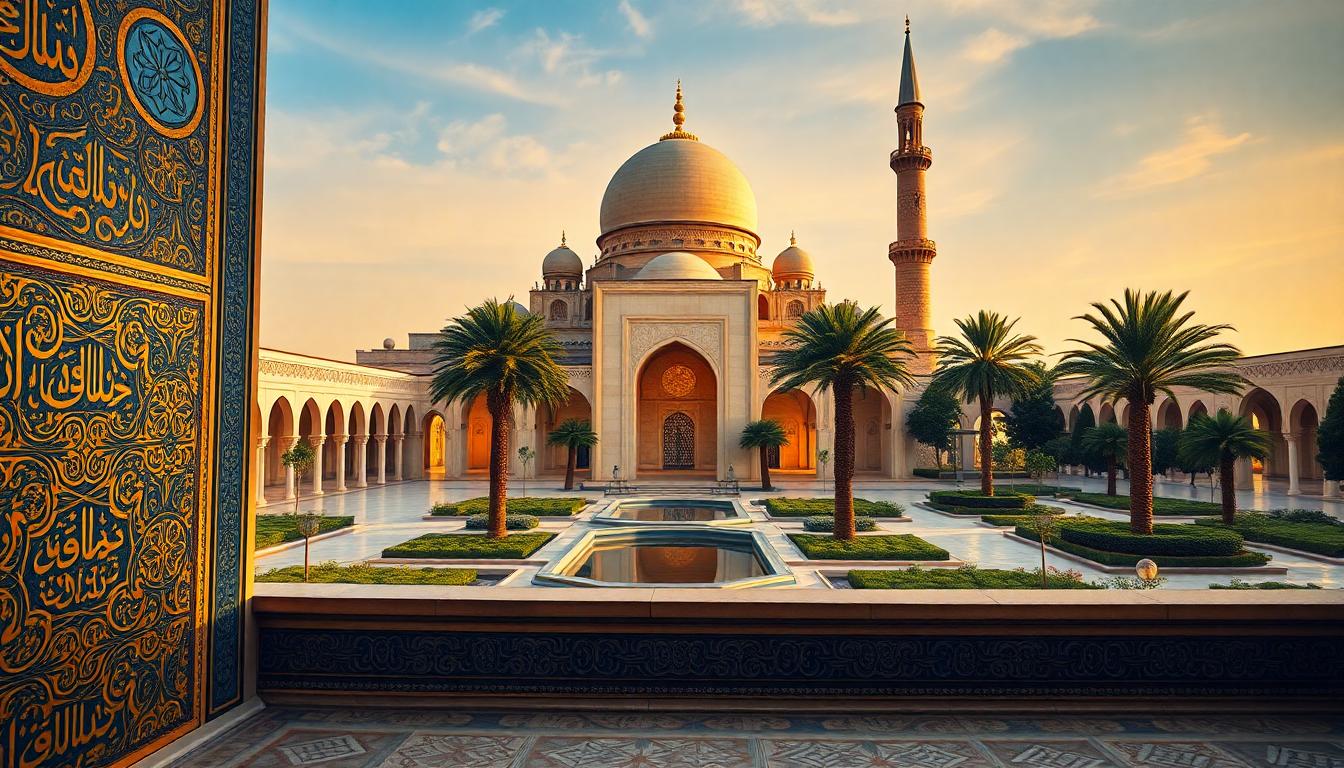
Image created with AI
Literature and Music: A Cultural Symphony
Beyond visual arts, literature thrived with poetry and stories weaving together faith, philosophy, and daily life. Poets like Rumi and Hafez wrote verses that remain beloved worldwide for their depth and lyricism. These works often explored spiritual themes with fresh, vivid imagery drawn from nature, emotion, and human struggle.
Music flourished in courts and cities, combining rhythms and instruments from across Africa, Asia, and Europe. These sounds enriched celebrations, devotional practices, and storytelling. In coffeehouses and palaces alike, music provided a backdrop for cultural exchange and social dialogue.
Everyday Influence: Coffee, Soap, and Medicine
The Muslim world’s influence extended well into everyday routines. The humble coffee cup connects directly to centuries-old Muslim coffeehouse culture, where ideas and news were shared over this energizing brew.
Soap, with its fragrant oils and herbal recipes, became a staple for hygiene, improving public health at a time when clean water was scarce for many.
Medical care advanced dramatically with hospitals offering specialized wards, trained doctors, and detailed medical texts. These developments raised standards of health and care in cities and beyond.
Language and Learning: Arabic’s Lasting Reach
Arabic became the language of science, math, and philosophy. Words like alcohol, alchemy, alchemy, and algorithm come from Arabic origins, signaling the lasting impact on global knowledge.
Through translation movements and trade, this language and the ideas it carried flowed beyond Muslim lands, enriching the Renaissance and shaping modern science.
Muslim art, culture, and daily life created a rich tapestry that continues to inspire and shape our world. Its echoes are not just in museums or historic sites but in routines, words, and tastes enjoyed around the globe.
For more about how these artistic traditions were shaped and spread, this deep dive into Islamic art and architecture offers fascinating insights.
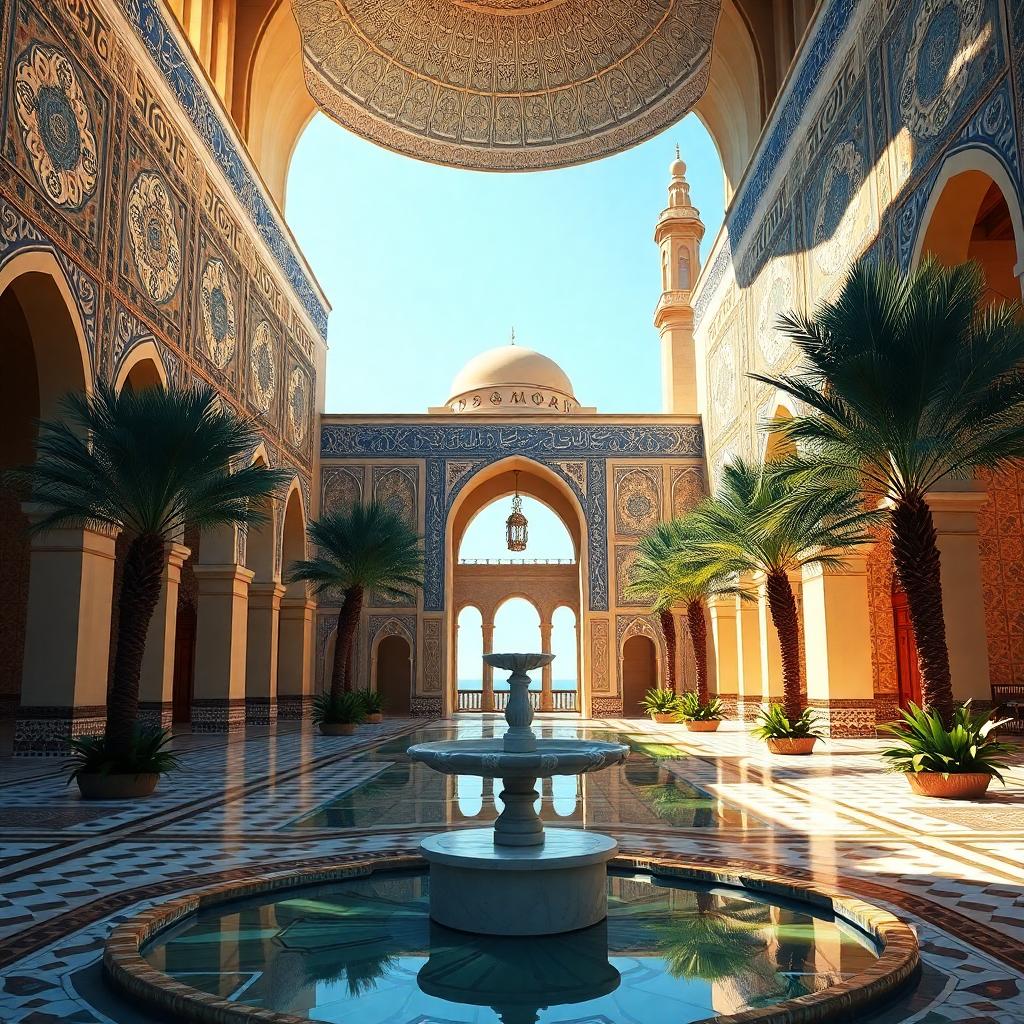
Image created with AI
Conclusion
The rich history of Muslim empires shows how unity, curiosity, and respect for knowledge helped shape science, culture, and global connections that still matter today. From the House of Wisdom in Baghdad to the vibrant libraries of Cordoba, scholars not only preserved ancient wisdom but built on it, creating advances in math, medicine, optics, and engineering that form the backbone of modern life.
Hospitals, algebra, navigational tools, and even cultural staples like coffee trace back to this impressive legacy. These achievements remind us that progress thrives when ideas cross borders and communities work together.
Appreciating this history helps us understand the deep roots of today’s interconnected world and encourages continued learning from diverse cultures. Take a moment to explore more, share your thoughts, or revisit how these innovations influence daily life—this legacy is very much alive.

